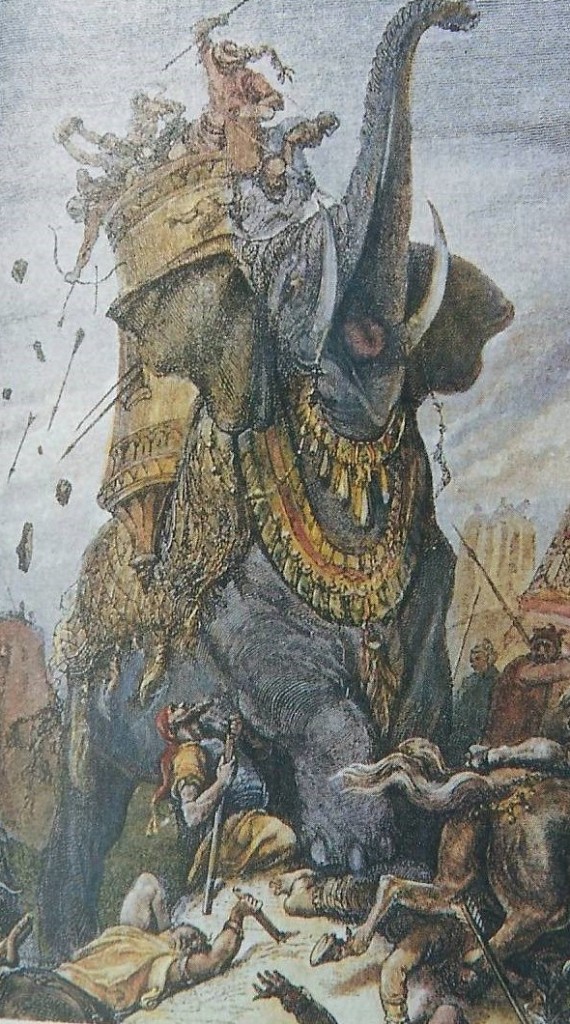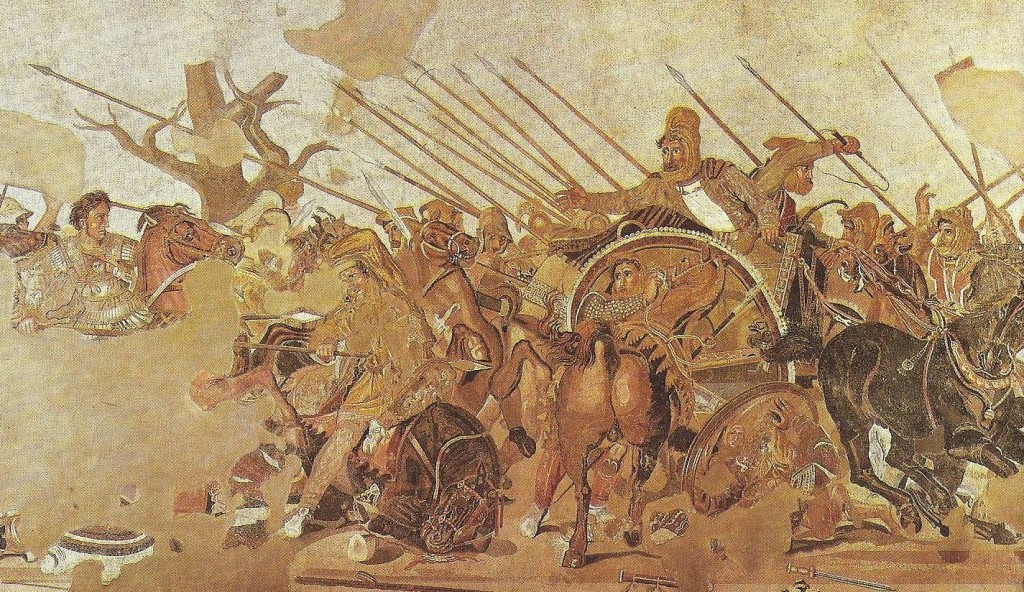03.04.08 331 B.C. Alexander the Great Conquers Tyre and Judah
Alexander, the world conqueror, brought great destruction to nearly every city he conquered. He devastated the supposedly indestructible Phoenician island city of Tyre by building a half mile long land-bridge to reach it. Of the captured defenders, he nailed 2,000 of them to crosses.[1] The destruction was absolute and in accordance with the prophet Ezekiel (Ch. 27). He then marched south against the ancient Philistine city of Gaza and onward to Jerusalem. At this point Josephus recorded the events in most interesting detail:
Now Alexander, when he had taken Gaza, made haste to go up to Jerusalem; and Judah the high priest, when he heard that, was in agony and under terror as not knowing how he should meet the Macedonians, since the king was displeased at his foregoing disobedience. He therefore ordained that the people should make supplications, and should join him in offering sacrifices to God, whom he besought to protect the nation and deliver them from the perils that were coming upon them. Whereupon God warned him in a dream, which came upon him after he had offered sacrifice, that he should take courage and adorn the city, and open the gates. The rest appear in white garments, but that he and the priests should meet the king in the habits proper to their order, without dread of any ill consequences, which the providence of God would prevent. Upon which, when he arose from his sleep, he greatly rejoiced; and declared to all the warning he had received from God according to which dream he acted entirely, and so waited for the coming of the king.
And when he understood that he was not far from the city, he went out in procession with the priests and the multitude of the citizens. The procession was venerable, and the manner of it different from that of other nations. It reached to a place called Sapha; which name, translated into Greek signifies a prospect, for you have thence a prospect both of Jerusalem and the temple. And when the Phoenicians and the Chaldeans that followed him, thought they should have the liberty to plunder the city and torment the high priest to death which the king’s displeasure fairly promised, then, the very reverse happened. For Alexander, when he saw the multitude at a distance in white garments, while the priests stood clothed with fine linen and the high priests in purple and scarlet clothing with his miter on his head having the golden plate on which the name of God was engraved, he approached by himself, and adored that name and first saluted the priest.
The Jews also did all together, with one voice, salute Alexander, and encompass him about: whereupon the kings of Syria and the rest were surprised at what Alexander had done, and supposed him disordered in his mind. However, Parmenio alone went up to him, and asked him how it came to pass, that when all others adored him, he should adore the high priest of the Jews? To whom he [Alexander] replied, “I did not adore him, but that God who hath honored him with that high priesthood; for I saw this very person in a dream, in this very habit, when I was at Dios, in Macedonia …”
Josephus, Antiquities 11.8.4-5 (325b-331a)
However, once he entered Israel, he went to Akko, that is located on the northern tip of today’s Bay of Haifa. This was the terminus of ancient trade routes, and there Alexander established a very active mint that produced the purest silver, gold and bronze coins in the ancient Middle East.[2] Among these coins was the Tyrian shekel that in later years would be the treasured coin of the Sadducees, even if it had the image of the god Melqarth.
Josephus recorded that after this conversation, Alexander offered sacrifices to God in the temple, at which time the scroll of Daniel was presented to him. The priests read the prophecies to him that stated that one of the Greeks would destroy the Persians (see Dan. 7:6; 8:3-8, 20-22; 11:3). This was an absolute delight for the Greek conqueror.
This may be why he was so kind to the Jewish people. He excused them from paying taxes during the Sabbatical year when there was no planting of crops, and even gave offerings in the temple.[3] When the Egyptian city of Alexandria was built (in honor of Alexander), Jews were recognized as citizens equal with the Greeks. Jews who enlisted in the army were permitted to practice their faith with complete freedom. He left Jerusalem in peace, the only city he did so, and destroyed the Persians. The divine protection and intervention of God in the tiny Jewish state was as dramatic as any in the Hebrew Bible.
Many of the architectural marvels of the Mediterranean that are credited to the Romans, were actually initiated by Alexander the Great and the Greeks who continued his ideas. In every country he conquered, he built a city that would serve as a model for other cities to be remodeled or constructed. That included better city planning, the building of a gymnasium for games and contexts modeled on the Greek order, wider streets, open-air theaters for public plays, of fine stately colonnaded buildings that served for civic and religious affairs. Along with these cultural changes, there was the Greek style of dress, language, philosophy, and manner of life. As will be seen later, this Hellenistic movement had a profound effect upon the Jewish people.[4]
[1]. Curtin Rufus 4.4.7, cited by Robinson. “Crucifixion in the Roman World: The Use of Nails at the Time of Christ” 54. n105.
[2]. Hendin, Guide to Biblical Coins. 131-3.
[3]. Golub, In the Days. 64-65.
[4]. Mould, Essentials of Bible History. 388-91.

